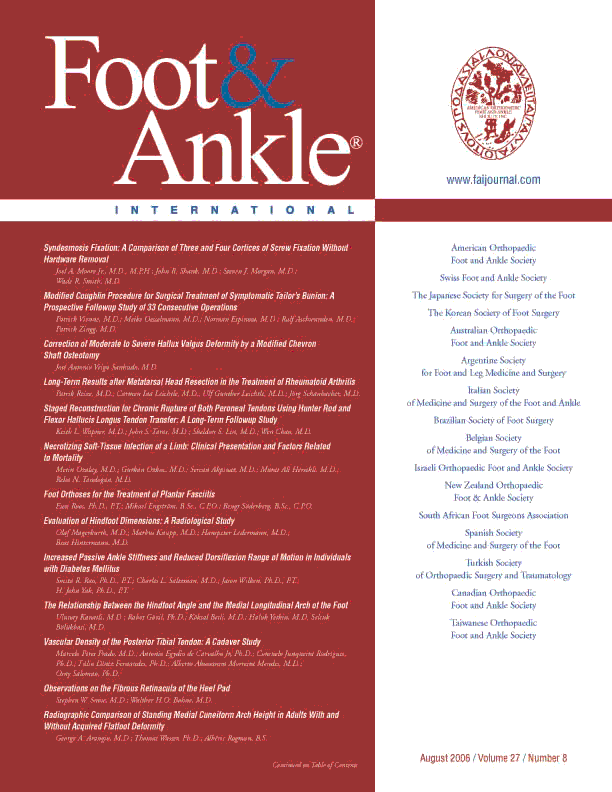
FOOT & ANKLE
No evidence for in-shoe orthoses in managing flexible excess foot pronation in children
Foot Ankle Int. 2007 Jun;28(6):715-23178 subjects were randomized to one of two treatment groups or a control group. One group received custom-made in-shoe orthoses, the second group received ready-made in-shoe orthoses, and the third group did not receive any orthoses (control). Outcomes of pain, gross motor skills, exercise efficiency and self-perception were examined. Results from this study did not provide evidence to justify in-shoe orthoses for the management of flexible excess foot pronation in children ages 7-11. No significant differences were seen in the outcomes when comparing the intervention and control groups at 3 and 12 months.
Unlock the full ACE Report
You have access to {0} free articles per month.Click below to unlock and view this {1}
Unlock NowCritical appraisals of the latest, high-impact randomized controlled trials and systematic reviews in orthopaedics
Access to OrthoEvidence podcast content, including collaborations with the Journal of Bone and Joint Surgery, interviews with internationally recognized surgeons, and roundtable discussions on orthopaedic news and topics
Subscription to The Pulse, a twice-weekly evidence-based newsletter designed to help you make better clinical decisions
Exclusive access to original content articles, including in-house systematic reviews, and articles on health research methods and hot orthopaedic topics
Or upgrade today and gain access to all OrthoEvidence content for just $1.99 per week.
Already have an account? Log in


Subscribe to "The Pulse"
Evidence-Based Orthopaedics direct to your inbox.
{0} of {1} free articles
Become an OrthoEvidence Premium Member. Expand your perspective with high-quality evidence.
Upgrade Now












































































